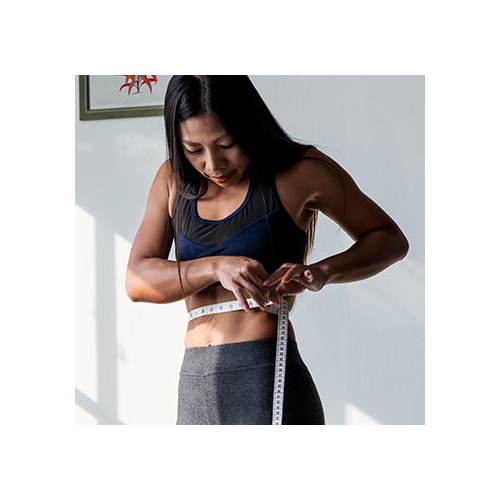To determine whether you are fat or in the bracket for obesity health risks, there are two basic screening tests. They are calculating your BMI and measuring your waist circumference. Understanding whether you have a high or low amount of fat can help you understand your propensity to develop weight-related diseases.

What is BMI?
Body Mass Index (BMI) is the calculation used in measuring your weight according to your height. A more accurate assessment of BMI is done by measuring body fat from skinfold thickness, bio-impedance Analysis (BIA), and densitometry (underwater weighing.) However, you can get a general idea of BMI through the BMI calculator. This self screening calculator can also help determine whether you are susceptible to weight related diseases .1,2


Using the BMI Calculator and Index Chart
The CDC created a BMI Index Chart to access whether you are underweight, healthy or obese.5 A low BMI indicates body fat is too low and a high BMI indicates excessive body fat.
- If your BMI is less than 18.5, it falls within the underweight range.
- If your BMI is 18.5 to 24.9, it falls within the normal or Healthy Weight range.
- If your BMI is 25.0 to 29.9, it falls within the overweight range.
- If your BMI is 30.0 or higher, it falls within the obese range.
Although it is most accurate to measure height in meters and weight in kilograms; The BMI formula has been adapted for height measured in inches and weight measured in pounds.
To determine your BMI: click on our Clean Wellness calculator

Measure your Waist Circumference
Excessive abdominal fat places an individual at a greater risk of developing obesity-related conditions such as high blood pressure, coronary artery disease and Type 2 Diabetes.3,4
Obesity-related conditions may be a factor if your waist circumference is higher than the following:
- Men - waist circumference more than 40 inches
- Women (non-pregnant) - waist circumference is more than 35 inches
To correctly measure your waist circumference:
- Stand and place a tape measure around your middle, just above your hipbones
- Make sure tape is horizontal around the waist
- Keep the tape snug around the waist, but do not compress your skin
- Measure your waist just after you breathe out

[1] Garrow, J.S. & Webster, J., 1985. Quetelet’s index (W/H2) as a measure of fatness. Int. J. Obes., 9(2), pp.147–153.
[2] Willett, K. et al., 2006. Comparison of bioelectrical impedance and BMI in predicting obesity-related medical conditions. Obes. (Silver Spring), 14(3), pp.480–490.
[3] Marseglia L, Manti S, D’Angelo G, Nicotera A, Parisi E, DiRosa G, Gitto E, Arrigo T. Oxidative stress in obesity: a critical component in human diseases. International Journal of Molecular Sciences. Dec 2014; 16(1):378-400.
[4] Kasen, Stephanie, et al. “Obesity and psychopathology in women: a three decade prospective study.” International Journal of Obesity 32.3 (2008): 558-566.
The Centers for Disease Control and Prevention (CDC) Physical Activity, and Obesity (Centers for Disease Control and Prevention [CDC], (2015)
Search the blog
Article Categories
- All Articles (95)
- Rating Charts (1)
- Beauty & Skincare (17)
- FAQ (0)
- Hair Care (9)
- Health & Wellness (12)
- Anti-Aging (4)
- Kid's Health (0)
- Makeup (2)
- Men's Health (2)
- Oral Care (3)
- Sunscreen (7)
- Skin Tools & Treatments (10)
- Supplements (26)
- Videos (0)






